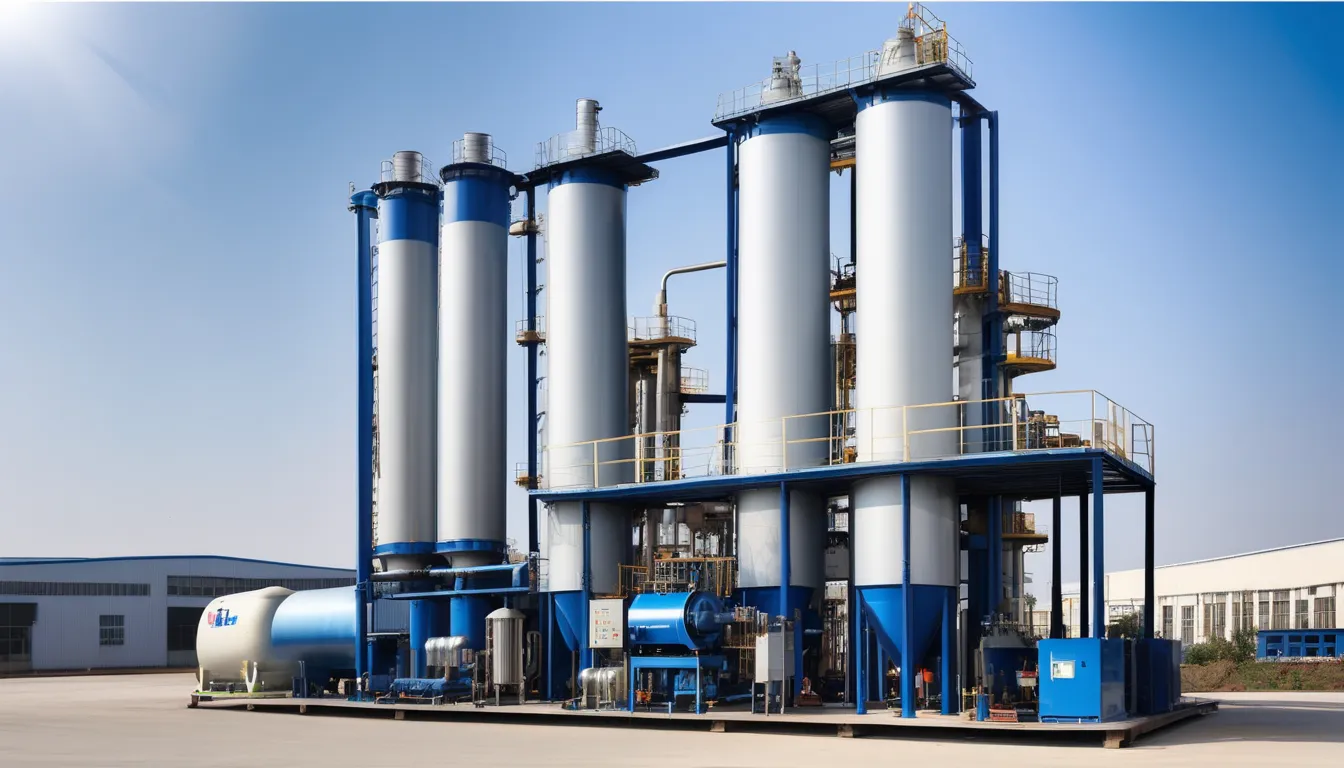
When you consider the landscape of turbo expanders, you’ll find that leading manufacturers like Air Products and Siemens are shaping the market with innovative technologies and a focus on efficiency. These companies are not just pushing boundaries; they’re setting standards that others strive to meet. As energy demands evolve, understanding the roles of these key players and emerging trends becomes essential. What’s driving their innovations, and how are niche players like Cryostar adapting to this competitive environment? The answers might surprise you.
Key Global Players
Identifying key global players in the turbo expander market reveals a landscape dominated by a few influential companies. You’ll notice that these manufacturers have established themselves through innovation, reliability, and extensive experience.
Companies like Air Products and Chemicals, Inc. and Siemens AG lead the pack, offering a range of Turbo Expander manufacturer s tailored for various applications. Their commitment to quality and efficiency ensures that they remain at the forefront of the industry.
You might also recognize names like Honeywell International Inc. and General Electric, both of which have made significant strides in expanding their product offerings. Their global reach allows them to cater to diverse markets, from oil and gas to renewable energy sectors.
Another key player is Cryostar, known for its specialization in cryogenic turbo expanders. Their focus on niche markets helps them maintain a competitive edge.
As you explore the landscape further, consider how these companies not only influence market trends but also drive technological advancements.
Innovative Technologies
In recent years, turbo expander technology has seen remarkable innovations that enhance efficiency and performance across various applications.
These advancements not only improve energy recovery but also contribute to sustainability goals. If you’re looking to understand these innovative technologies, here are some key developments that stand out:
- Advanced Materials: Manufacturers are using lightweight, durable materials that reduce wear and tear, improving the lifespan of turbo expanders.
- Digital Controls: Integration of smart digital controls allows for real-time monitoring and adjustments, optimizing performance under varying operating conditions.
- Compact Designs: Innovations in design have led to more compact and lightweight models, making installation easier and saving space.
- High-Performance Bearings: The introduction of advanced bearing technologies reduces friction and enhances reliability, which directly impacts overall efficiency.
- Modular Systems: New modular designs allow for easier upgrades and maintenance, enabling facilities to adapt to changing demands without significant downtime.
Market Trends
As you explore the landscape of turbo expander technology, you’ll notice several key market trends shaping its future. One significant trend is the increasing demand for energy efficiency across industries. Companies are investing in turbo expanders to optimize energy recovery processes, which helps reduce operational costs and carbon footprints.
Moreover, the rise of renewable energy sources, such as wind and solar, is driving innovation in turbo expander designs. These systems are being integrated into energy storage solutions, allowing for smoother energy management and enhancing overall performance.
You’ll also find that advancements in materials and manufacturing techniques are leading to lighter, more durable turbo expanders. These improvements enhance reliability and efficiency, making them more attractive to manufacturers and end-users alike.
Additionally, automation and digitalization trends are influencing the market. Smart technologies are being incorporated into turbo expander systems, providing real-time monitoring and predictive maintenance capabilities. This enhances operational efficiency and helps prevent costly downtime.
Lastly, globalization is fostering collaboration among manufacturers and research institutions, accelerating the development of cutting-edge turbo expander technologies.
Keeping an eye on these trends will help you understand the evolving dynamics of the turbo expander market.
Case Studies
With the ongoing advancements in turbo expander technology and the increasing focus on energy efficiency, real-world applications highlight the effectiveness of these systems.
You’ll find numerous case studies showcasing how industries leverage turbo expanders to optimize performance and reduce operational costs.
Consider these impactful examples:
- Natural Gas Processing: Turbo expanders recover energy from high-pressure gas, enhancing overall plant efficiency.
- Liquefied Natural Gas (LNG) Applications: They help in cooling natural gas to liquid form, conserving energy during the liquefaction process.
- Waste Heat Recovery: Industries utilize turbo expanders to convert waste heat into useful energy, improving energy utilization rates.
- Refrigeration Systems: Turbo expanders can assist in boosting the efficiency of refrigeration cycles, leading to lower energy consumption.
- Hydrocarbon Processing: They play a critical role in enhancing the efficiency of separation processes, resulting in reduced fuel costs.
These case studies illustrate that turbo expanders not only drive energy savings but also contribute to sustainability goals across various sectors.
Future Outlook
The future of turbo expander technology looks promising, driven by innovations aimed at increasing efficiency and sustainability. As you explore developments in this field, you’ll notice a significant push towards integrating digital technologies.
Manufacturers are investing in advanced analytics and AI to improve performance monitoring and predictive maintenance, which can drastically reduce downtime and operational costs.
You can also expect to see a greater emphasis on environmentally friendly designs. With global regulations tightening on emissions, companies are developing turbo expanders that not only optimize energy recovery but also minimize environmental impact.
This trend aligns with the increasing demand for cleaner energy solutions, especially in industries like natural gas processing and power generation.
Additionally, the expansion of renewable energy sources will create new opportunities for turbo expanders. As you look ahead, you might find that these systems will be crucial in harnessing waste heat from various processes, thus enhancing overall energy efficiency.
Conclusion
In summary, the global turbo expander market is shaped by key players like Air Products, Siemens, and Honeywell, who prioritize innovation and efficiency. As demand for energy-efficient solutions grows, these manufacturers are pushing the boundaries with advanced technologies and collaborations. By staying informed about market trends and case studies, you can better understand how these developments impact the industry. The future looks promising, with ongoing advancements that will enhance performance and reliability in energy applications.
